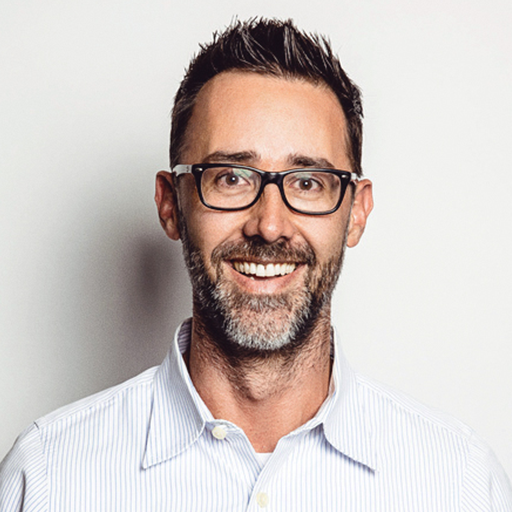Frank Barry, COO of Tithe.ly, has a unique background in youth ministry and software, that has prepared him to help lead a quickly growing SaaS company for churches. In this episode, he and Jane discuss the rapid growth that Tithe.ly experienced during the pandemic, and how the team was able to maintain their personalized support with an influx of customers. Part of that was hiring — hiring a lot. Frank also discusses the factors that allow them to hire and train CSMs to join in as part of the larger “customer experience” team.
Digital, online giving
To understand Tithe.ly’s success, it’s important to understand how churches are funded. Churches collect offerings by way of a collection plate — they gather offerings from churchgoers in the form of cash or check. It’s not uncommon for churches to make most — or all — of their money this way. These offerings sustain the church, even if it’s only financing the church operations week to week, as Frank describes. One of his longtime pastor friends had the idea:
“You should be able to give to your church on your iPhone, just like you can buy a coffee at Starbucks.”
After his friend’s son built the first version for iOS, they landed the product-market fit right away. A few years later, the company experienced a huge growth spurt during the pandemic:
“We’ve grown pretty well. COVID, in a very crazy way, was a massive growth moment for us as a company, similar to companies like Zoom, where they just had crazy growth through this really terrible time.”
As churches were forced to move their operations online during the pandemic, they needed ways to move their giving online, too.
Nailing product-market fit
It’s not often SaaS leaders find product-market fit on the first try, but you can add Frank to the list who have. He gives much of the credit to digitizing an existing process, a process that had already been tested:
“Churches were collecting money in the plate. So cash and checks were already happening. This motion of giving to your church every Sunday or every weekend was already happening. It was a thing that existed, and people are using cash and checks. So we just came through and disrupted that and gave people a new way to give, but they were already doing things on their phone. We just brought the two together, and brought it into the church, and made it really, really easy.”
The Tithe.ly team wasn’t without challenges though. There were fees, security concerns, lack of tech skills, and adoption to worry about, but the main mechanisms were already in place.
Competition and competitive advantage
Tithe.ly isn’t the only company in this space. With around 350,000 churches in the US, the market is big and dynamic says Frank:
“We compete really well, because it’s easy to sign up on our website. You can go live in a few minutes, taking mobile giving or online giving really easily. We made the process so easy, so fast, so painless that churches love to come our way, because it’s not hard to do business with us.”
The other thing that plays into their competitive advantage is a highly personal touch. Something that’s not common for many other SaaS businesses. Frank describes the mindset like this:
“We’ve got to be very relational. We’ve got to get on the phone with them. We’ve got to help them. We’ve got to make them feel like they have the human touch. They can ask their questions. Every single customer that signs up on our website gets a phone call and an email from a real person. And we try to schedule a meeting to chat with them and answer questions, or give them a product walkthrough. We’ll help them get things set up on their website if they need help with that.”
Once they decide to continue with Tithe.ly after the touchpoint, the customer success team will help take over and get them onboarded.
Scaling the personal experience
Jane asks what the “secret sauce” is to hiring this capable customer success team. Luckily for Frank and Tithe.ly, finding mission-driven employees is easier given the space that they are in:
“We tend to hire people that are really like-minded and love serving churches themselves. We get people that are sincerely excited to work at a tech company that is serving churches. And it’s almost an extension of who they are, not just a job. Finding those kinds of people that don’t look at this as like it’s a job, but almost a personal mission, a personal passion of their own because of their own faith.”
Tithe.ly’s workforce averages very young and is technically savvy. Digital natives, essentially.
Handling increased demand
When COVID hit, things started to grow substantially for Tithe.ly:
“To give people a sense, we usually sign up 600-700 accounts a month, and during COVID we were signing up thousands a day. So it was off the charts.”
Frank and the leadership team established a daily standup each day during this growth “crisis” to help rearrange resourcing, prioritize, etc. They brought on numerous temp workers — many that would go on to stay full time after the fact — and with lots of encouragement and communication, the team fumbled through the ramp of success together.
Scaling the human part of the high-touch processing was tricky, as the employee onboarding periods were shrunk to nearly nothing. Teamwork and support filled in for employee training at the time, to be augmented again later when the growth settled. During this “massive scale event” Frank believes they grew from around 70 employees to the 135 they are today. The customer experience team itself grew from about 20 to 40.
Would Frank change anything about navigating this massive growth? He doesn’t think so. He reflects on how uncommon the circumstances were:
“I felt like the team, the company really rallied. We were really responsive to our customers. I’m sure there are things we could have done better, but it’s all part of scaling. You hit this moment and you don’t know… This is a once-in-a-lifetime thing. Where a pandemic hits every church and the world shuts down and they all need digital giving. Is Zoom going to have another moment where everything shuts down and everybody has to go into video communication? I don’t know if that’s gonna happen again. So can you ever really be ready for that?”
A few lessons can still be gleaned for the future. Namely, the team is now using more one-to-many Zoom sessions for onboarding, and generally try to decrease human involvement for periods of high volume.
Evaluating fraud
Part of the customer experience team is dedicated to fraud detection, a role that’s critical when processing payments. Jane can relate to this with Userlist, as email sending is also a sensitive industry).
Stripe, the payment processor that Tithe.ly uses, helps with fraud detection to some extent, but the fraud detection team is the first defense. They vet every account that comes through the door and very rarely make errors. When they do, it’s a learning experience, and the teams uses such incidents as case studies to bulk up their process:
“As long as we learn from every case and that same thing doesn’t work again, we’re in good shape. And that team does just a fantastic job. We haven’t had any cases of fraud in a long time.”
Following up with prospects
Response time is key. For Title.ly, it makes sense to get in touch with them as soon as possible:
“Getting on the phone and sending the email really quickly just makes sense. It’s pretty straightforward because they’ve come to us and they’ve signed up on our website, right? These aren’t people that downloaded an ebook webinar, etc”
Final advice
Do talk to your customers. It sounds obvious, but it can be hard.
“Get on the phone, get on Zoom, talk to your customers, no matter what kind of product you have. That kind of interaction, and the relationships you build, and the real feedback you get is invaluable.”
Don’t obsess about being perfect.
“We just incrementally, little by little, try to make improvements, and we don’t get too bummed by the spots where we’re not too good at.”
Thanks for listening! If you found the episode useful, please spread the word on Twitter mentioning @userlist, or leave us a review on iTunes.

